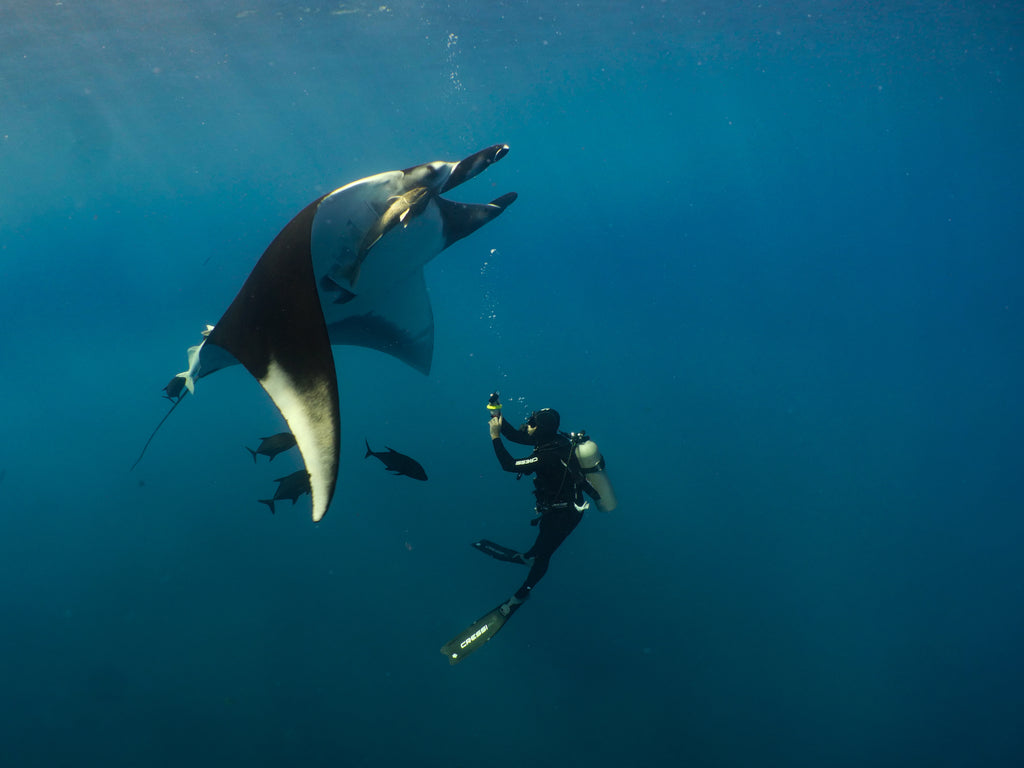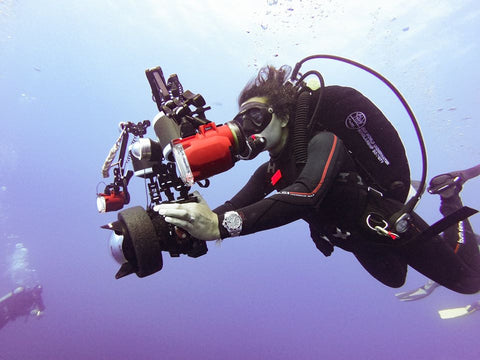I recently embarked upon my first Liveaboard to join a trip to the Revillagigedo Archipelago with the Quino El Guardian.

This vessel is a converted fishing boat, which now runs trips with a focus on citizen science. Citizen science has been rapidly increasing in popularity, as many tourists choose to spend their time on vacation doing something meaningful. On most of their voyages, the Quino brings along a scientist who does work in the area, and guests are invited to help with data collection and other activities.
 One of the main activities that divers can help with on these trips is capturing identification photos of the oceanic manta rays. Scientists have been studying the mantas of the area for years and have begun to build up a database of who’s who. Like our fingerprints are unique to us, the spotting pattern on the belly of a Manta can identify it. By uploading these images to a database we can keep track of these individuals and understand more of their complex life histories. This is an incredible way to use photography as a scientific tool.
One of the main activities that divers can help with on these trips is capturing identification photos of the oceanic manta rays. Scientists have been studying the mantas of the area for years and have begun to build up a database of who’s who. Like our fingerprints are unique to us, the spotting pattern on the belly of a Manta can identify it. By uploading these images to a database we can keep track of these individuals and understand more of their complex life histories. This is an incredible way to use photography as a scientific tool.

The Revillagigedo archipelago is one of the coolest places in the world, and has been a goal of mine to reach for many years. They are located about a 2 day journey south from Cabo San Lucas, and act as refugia for nine species of sharks, oceanic mantas, and other pelagic animals like dolphins. Because of the focus on pelagic megafauna, there is a lot of open water diving, in deep waters. This has been developmental for me in terms of both diving skills, and photography. When photographing larger animals from farther away, one needs to know how to utilize natural light. This took a while to get use to, and to understand the situations where strobes were inappropriate. Luckily, the visibility here was incredible, and even at 30m there was adequate light to capture cool images.
As of 2017 the 4 islands that make up the Revillagigedo Archipelago were protected and now form the largest marine protected area in North America. They have been characterized as a vital location for the elasmobranchs of the Eastern Pacific Corridor. Please check out my blog if you would like to learn more. I feel so lucky to have visited such a remote place in a way that contributed to science and conservation!

Photo by Steve Peletz
